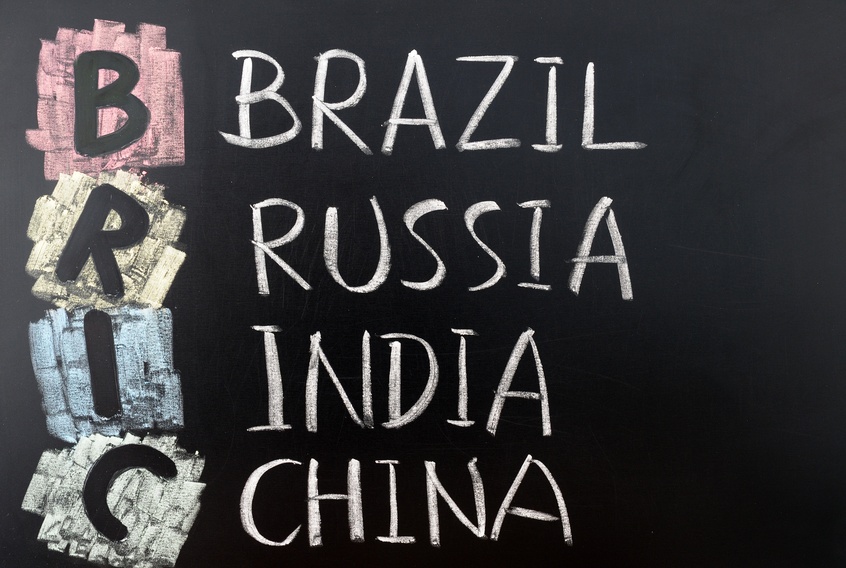Emerging Markets: Still Not Cheap and Still Not Pretty

 Back in the summer of 2013, when I was managing over US$10 billion in emerging markets (EM) fixed income assets, I looked around the industry at my fellow EM portfolio managers and saw a stunned group. In early May that year, Ben Bernanke shocked the world out of its complacency by announcing that the Federal Reserve was ready to taper its purchases of securities, effectively tightening monetary policy (a precursor to raising interest rates). U.S. interest rates climbed dramatically, but the carnage was felt most in the EM world – especially anything with a foreign currency exposure. EM equities fell over 15%, and currencies plunged (most lost between 10-25% of their value against the dollar in 2013). Since then, the value of these assets has oscillated wildly, often led by the market’s assessment as to whether the Fed was going to hike, or not. Since the Fed’s first hike has firmly been placed on the table to happen this year, EM assets have again plummeted in value. Is it finally time to buy emerging market assets? My answer remains no – they still aren’t cheap, and they still aren’t pretty.
Back in the summer of 2013, when I was managing over US$10 billion in emerging markets (EM) fixed income assets, I looked around the industry at my fellow EM portfolio managers and saw a stunned group. In early May that year, Ben Bernanke shocked the world out of its complacency by announcing that the Federal Reserve was ready to taper its purchases of securities, effectively tightening monetary policy (a precursor to raising interest rates). U.S. interest rates climbed dramatically, but the carnage was felt most in the EM world – especially anything with a foreign currency exposure. EM equities fell over 15%, and currencies plunged (most lost between 10-25% of their value against the dollar in 2013). Since then, the value of these assets has oscillated wildly, often led by the market’s assessment as to whether the Fed was going to hike, or not. Since the Fed’s first hike has firmly been placed on the table to happen this year, EM assets have again plummeted in value. Is it finally time to buy emerging market assets? My answer remains no – they still aren’t cheap, and they still aren’t pretty.
Most emerging markets need to borrow from the rest of the world. They are known for being the fastest growing countries, with rich resources and young populations. However, by definition they are poorer than their developed country counterparts, and as such have little savings to finance their growth. They have to borrow from foreigners in order to make new investments. These markets (the governments, the corporations, and the citizens) have been able to borrow very cheaply over the past five years, thanks to the very easy monetary policies run by the United States, Europe and Japan. People and institutions of these richer countries have also been willing to lend to the poorer countries, as they were able to receive much higher yields this way (compared to a near zero percent return in a U.S. bank account!) This happy lending/borrowing binge has been winding down since Bernanke’s 2013 lightning attack, but is likely to face significant stress as U.S. interest rates actually go higher.
Why? While not as bad as the likes of Greece or Spain, the debt loads of EM governments and corporations have ballooned. Meanwhile, economic growth rates have fallen dramatically. Borrowing rates are going up, and investors are getting pickier, so countries need to compete for investor dollars for the first time since 2008. In order to attract that much needed money – needed even to pay interest on existing debt – emerging markets must be really cheap and/ or really pretty. They aren’t there yet.
How does an emerging market look pretty to an investor? There are many metrics that analysts use. First, the country’s debt burden must be under control. The government needs to illustrate that it isn’t going to borrow forever, at higher and higher rates, as this will lead to significant probabilities of bankruptcy (Ukraine is caught in this situation right now). Government spending needs to be under control. Countries also need to have stable and predictable governments, institutions, and policies (preferably ones conducive to a positive business environment), and stable macroeconomic indicators such as low inflation. In addition, a country that emphasizes security for its citizens and enacts laws to protect property rights tends to be more attractive to foreign investors. Finally, investors prefer to lend money to countries with strong economic growth trajectories, especially if a stable political environment exists to support it.
 Not many countries are looking stellar on these criteria at the moment. Take the BRICs for example (Brazil, Russia, India, and China). With the exception of India, each of these large countries have seen their economic growth rates decline year after year, and their government deficits (revenues minus expenditures) grow significantly, producing higher debt burdens. As commodity prices have plunged, Russia and Brazil have been especially hurt. Brazil is also in a political crisis; this week’s polls show President Dilma with only an 8% approval rating – and many of the top politicians are embroiled in scandals, so legislative action to improve the situation is all but dead. In Russia, thanks to Putin’s grand ambitions to conquer more territory in Ukraine, foreign sanctions have paralyzed Russian companies’ ability to borrow abroad, and an already weak economy is worsening. Outside these countries, Turkey, South Africa, Malaysia, and even Mexico are suffering from a combination of political turmoil, increased borrowing costs, weakening currencies and weak investor sentiment. It’s hard to find a shining star in this asset class.
Not many countries are looking stellar on these criteria at the moment. Take the BRICs for example (Brazil, Russia, India, and China). With the exception of India, each of these large countries have seen their economic growth rates decline year after year, and their government deficits (revenues minus expenditures) grow significantly, producing higher debt burdens. As commodity prices have plunged, Russia and Brazil have been especially hurt. Brazil is also in a political crisis; this week’s polls show President Dilma with only an 8% approval rating – and many of the top politicians are embroiled in scandals, so legislative action to improve the situation is all but dead. In Russia, thanks to Putin’s grand ambitions to conquer more territory in Ukraine, foreign sanctions have paralyzed Russian companies’ ability to borrow abroad, and an already weak economy is worsening. Outside these countries, Turkey, South Africa, Malaysia, and even Mexico are suffering from a combination of political turmoil, increased borrowing costs, weakening currencies and weak investor sentiment. It’s hard to find a shining star in this asset class.
What about looking cheap? Well, currencies and equities are certainly much cheaper today than in the last few years – but not cheap enough. Cheapness is a subjective measure of course. In my opinion, when something goes on sale with a big enough cut in price, someone starts buying. “There’s no such thing as a bad bond, just a bad price,” my boss used to say. We haven’t seen consistent buyers of either the local currency debt or equity asset classes in years now, as the price isn’t right. The benchmark index for local currency debt (JP Morgan’s) has lost 9% in 2015 so far, and 24% since April 2013 when Bernanke shocked the market. Morgan Stanley’s benchmark EM equity index has lost about 17% since April 2013, and about 8% this year. If countries don’t aggressively work on looking prettier – and I see no sign of this happening – they are going to have to become even cheaper in order to induce investors to take the risk.
I do have faith in the long run viability of the asset class. These countries represent half of the world’s gross domestic product (GDP), the only significant growing populations, and most of them still enjoy investment grade status. While I expect Brazil to lose this important badge, it and others who are currently in trouble are not on their way to bankruptcy. The pressure on their currencies, interest rates, and credit ratings will ultimately induce politicians to act. If they don’t, we won’t have to worry about them as investors because their markets will shut (think Ecuador and Argentina, in recent past). We may have to wait several months, but the buying opportunity for emerging markets will appear.





